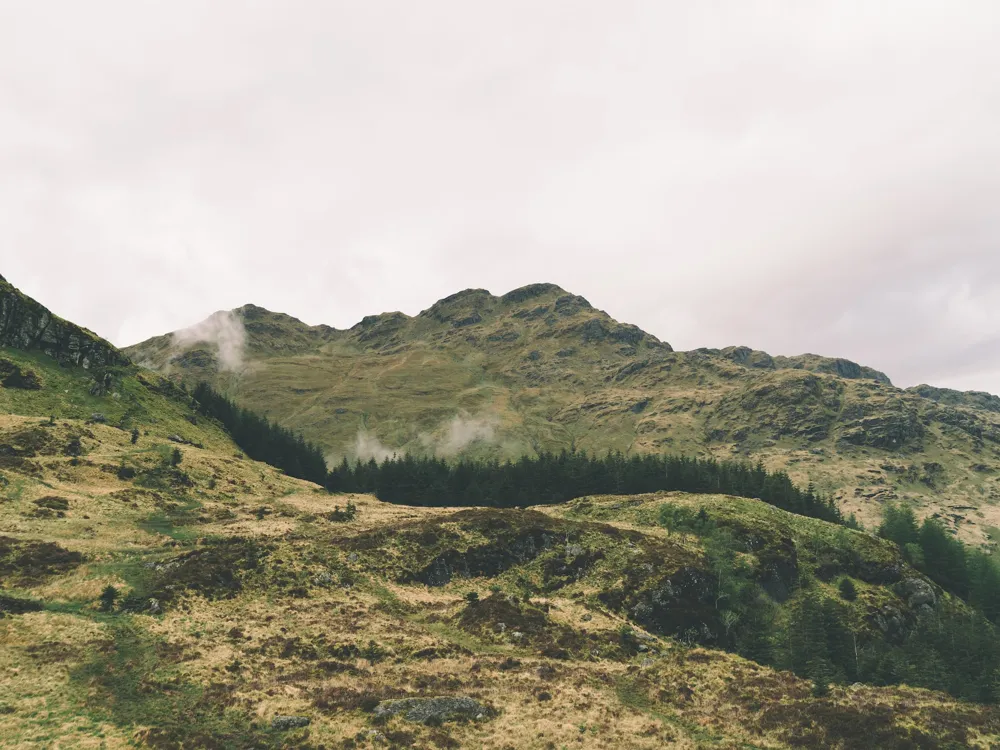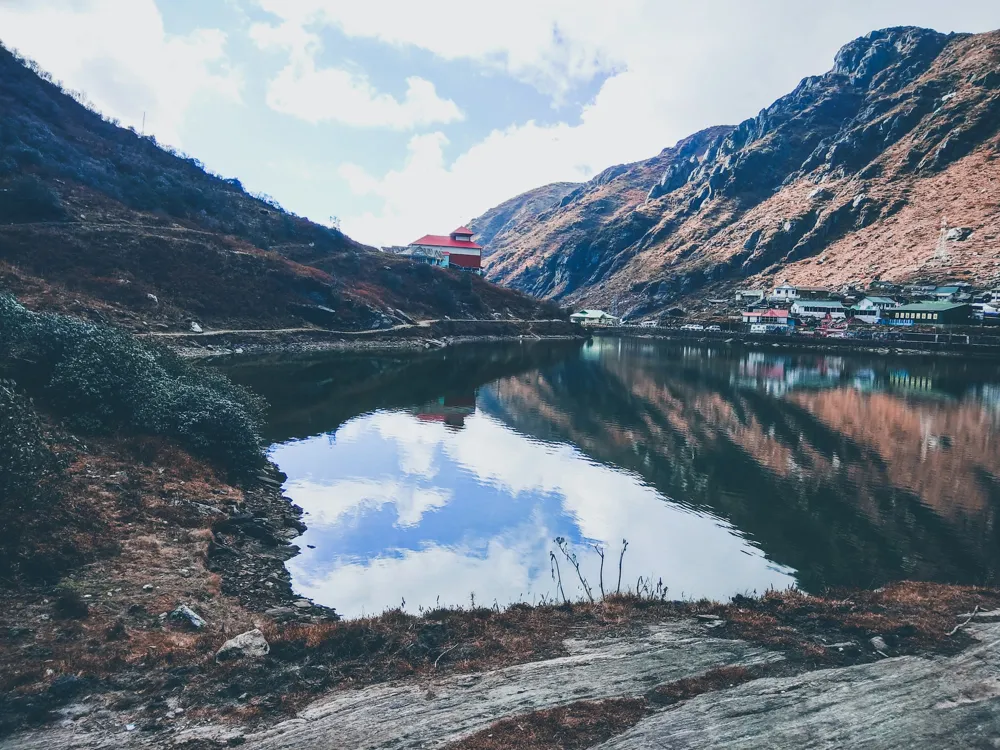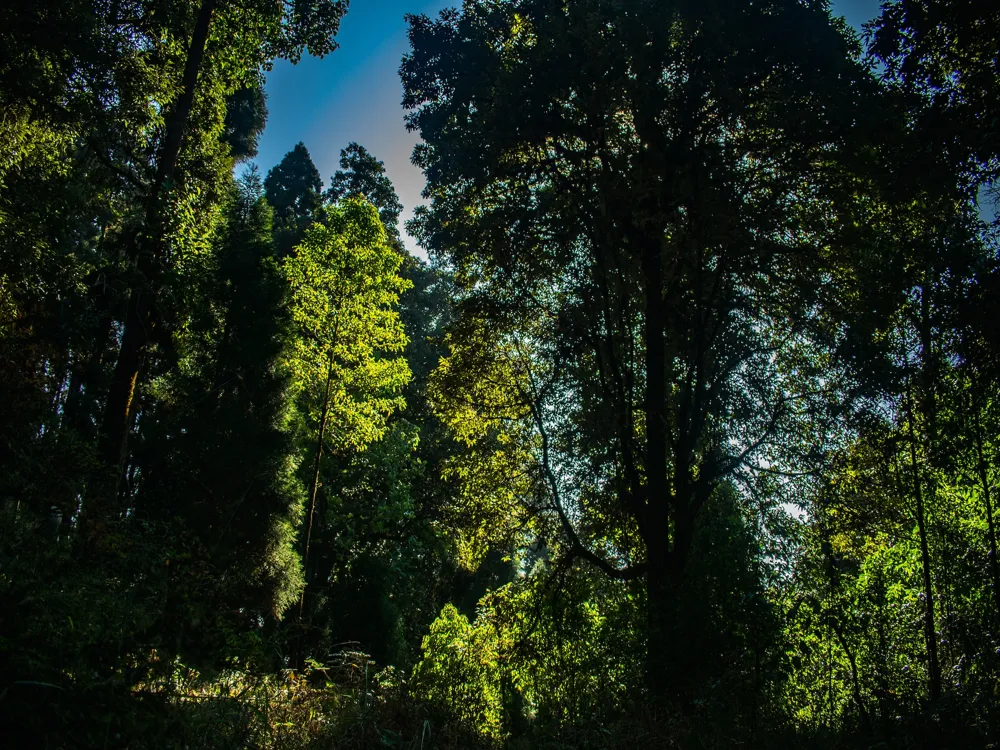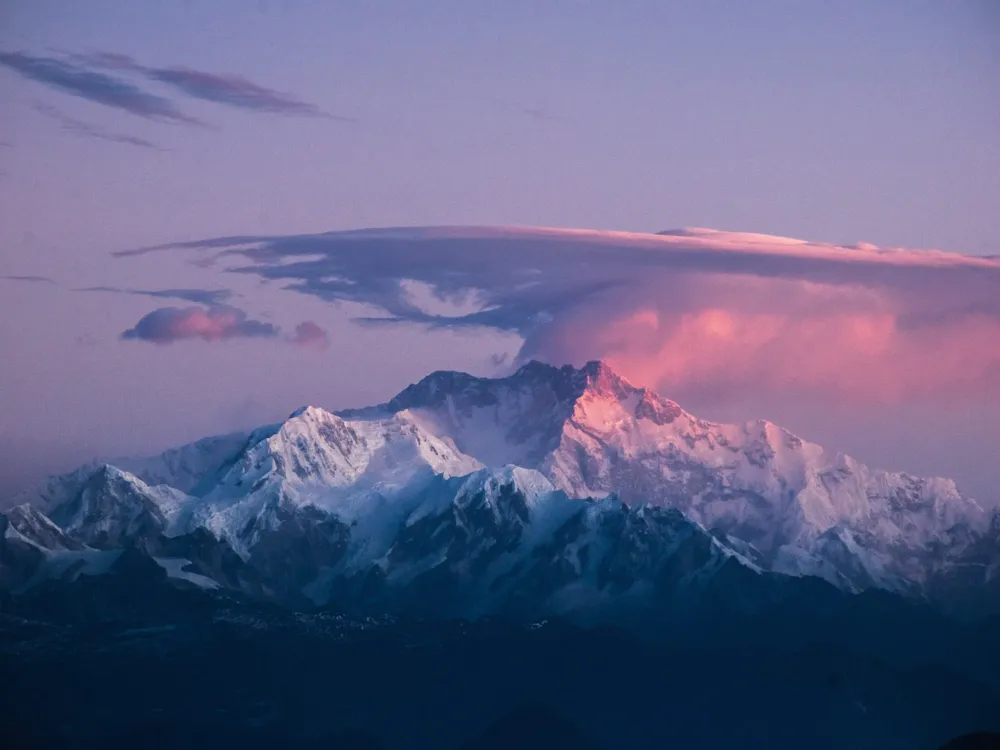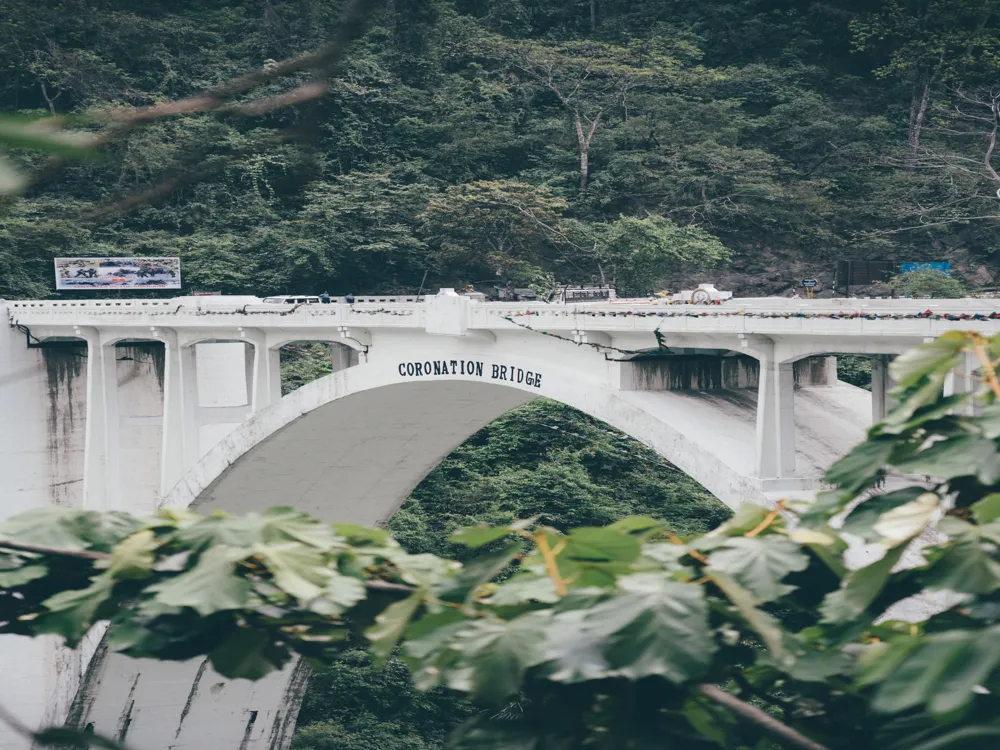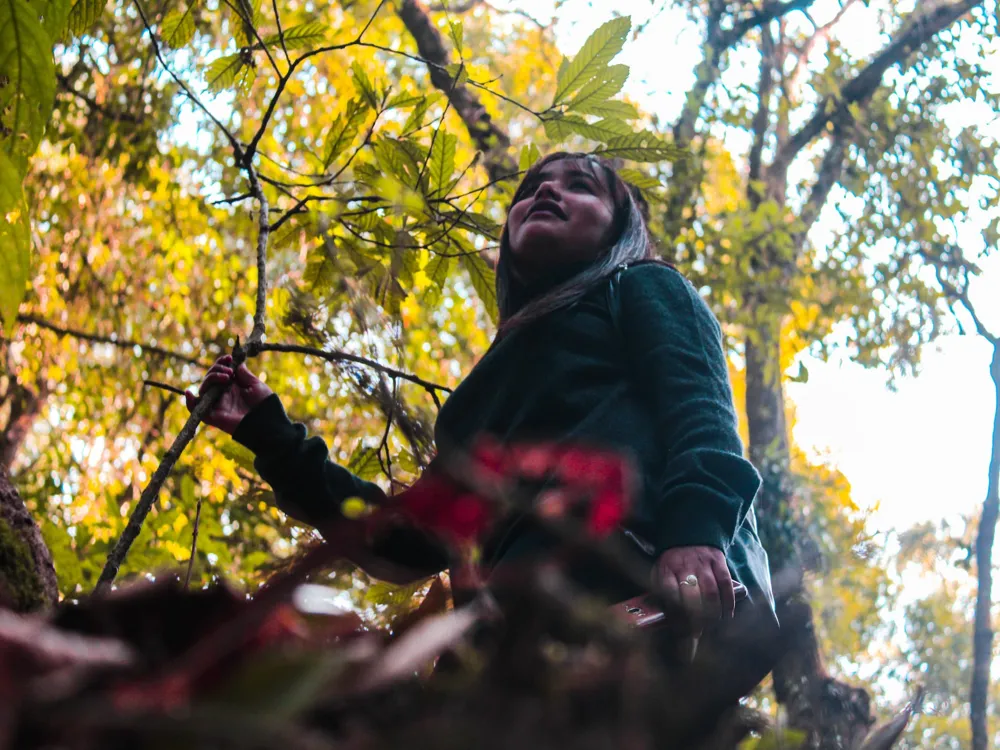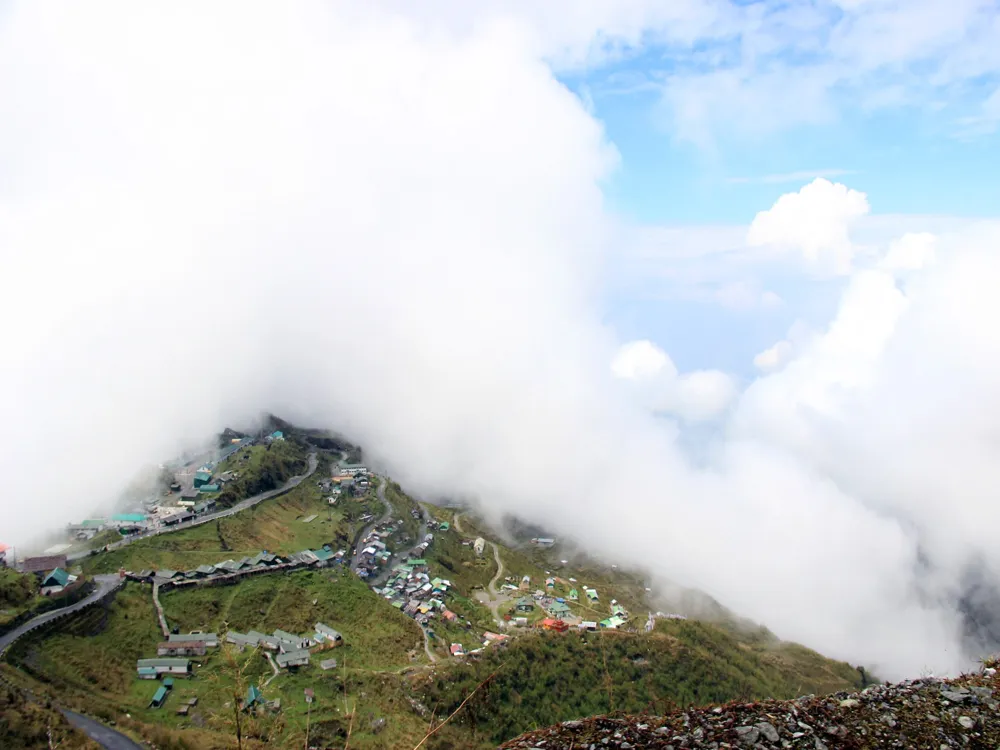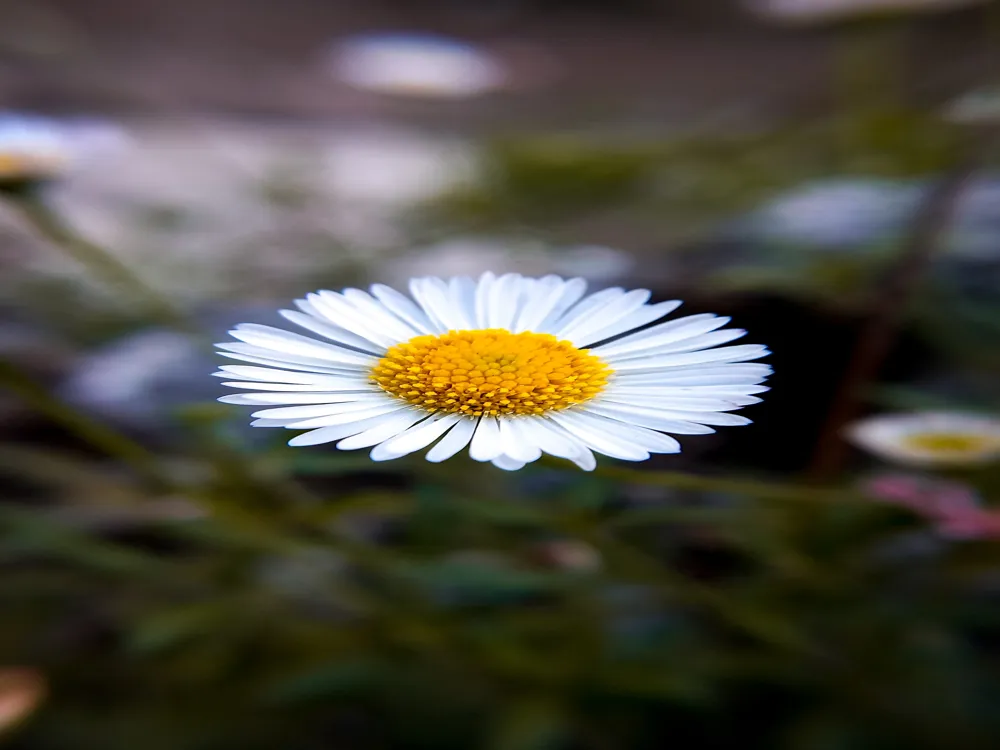Durpin Dara Hill, a gem in the crown of Kalimpong, West Bengal, is a place of serene beauty and tranquility. Perched at an altitude of 1,372 meters, this hill offers a panoramic view of the Himalayan ranges and the confluence of the Teesta and Rangeet Rivers. The name 'Durpin' translates to 'binoculars' in the local language, symbolizing the expansive views it offers. The hill is not just a natural wonder but also a cultural and historical hotspot. It is home to the famous Zang Dhok Palri Phodang monastery, blessed by the revered Dalai Lama in 1976. This monastery holds significant religious importance and houses many rare Tibetan Buddhist scriptures. The lush green surroundings, coupled with the vibrant Tibetan culture, make Durpin Dara Hill a unique blend of nature and culture. The journey to the hill itself is a mesmerizing experience, with winding roads cutting through dense forests and occasional glimpses of the majestic Himalayas. Once at the summit, visitors are greeted with a breathtaking view that extends to the plains of Siliguri and beyond. The play of clouds and light creates an ever-changing landscape that captivates every onlooker. Aside from its natural beauty, Durpin Dara Hill is a haven for birdwatchers and nature enthusiasts. The region is rich in biodiversity, hosting various species of flora and fauna. The changing seasons bring different hues to the hill, making it a perfect destination throughout the year. The architecture of Durpin Dara Hill is a fascinating amalgamation of traditional Buddhist styles and modern influences. The Zang Dhok Palri Phodang monastery, the crown jewel of the hill, is an excellent example of Tibetan architectural brilliance. The monastery’s design reflects deep spiritual symbolism and adherence to Buddhist traditions. The monastery is adorned with intricate murals and frescoes that depict various aspects of Buddhist lore. The vibrant colors and detailed artwork create a mesmerizing visual experience. The monastery’s structure is built in a traditional Tibetan style, with tiered roofs and prominent wooden carvings. The prayer hall, with its large, ornate prayer wheels and statues of Buddhas and Bodhisattvas, is a testament to the skilled craftsmanship of the region. Surrounding the monastery are several stupas and prayer flags, adding to the spiritual ambiance of the hill. The layout of the entire complex is strategically designed to promote peace and meditation. The harmonious blend of nature and architecture at Durpin Dara Hill offers a tranquil retreat for those seeking solace and inspiration. The ideal time to visit Durpin Dara Hill is between March to May and September to December when the weather is pleasant and the views are clear. Visitors should carry warm clothing, comfortable shoes, water, snacks, and a camera to capture the stunning views. It's important to respect the local culture and traditions, especially when visiting the monastery. Dress modestly and follow any guidelines provided. Durpin Dara Hill is accessible by various modes of transport. The nearest airport is Bagdogra Airport, about 79 kilometers away. From there, visitors can hire a taxi or take a bus to Kalimpong. The closest railway station is New Jalpaiguri, which is well-connected to major cities. Once in Kalimpong, Durpin Dara Hill is a short drive away and can be reached via local taxis or hired vehicles. The journey to Durpin Dara Hill is as scenic as the destination itself. The route passes through lush green landscapes and offers glimpses of the local lifestyle. For those seeking a more adventurous route, trekking options are also available, offering a closer experience of the region's natural beauty. Read More: Overview of Durpin Dara Hill in Kalimpong, West Bengal
Architecture of Durpin Dara Hill
Tips When Visiting Durpin Dara Hill
Best Time to Visit
Essentials to Carry
Respect Local Culture
How To Reach Durpin Dara Hill
Durpin Dara hill
Kalimpong
West Bengal
₹ 9,500 onwards
View kalimpong Packages
Kalimpong Travel Packages
View All Packages For Kalimpong
Top Hotel Collections for Kalimpong

Private Pool

Luxury Hotels

5-Star Hotels

Pet Friendly
Top Hotels Near Kalimpong
Other Top Ranking Places In Kalimpong
View All Places To Visit In kalimpong
View kalimpong Packages
Kalimpong Travel Packages
View All Packages For Kalimpong
Top Hotel Collections for Kalimpong

Private Pool

Luxury Hotels

5-Star Hotels

Pet Friendly












